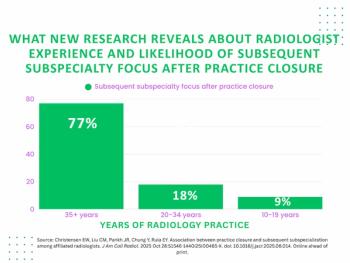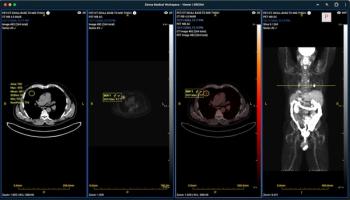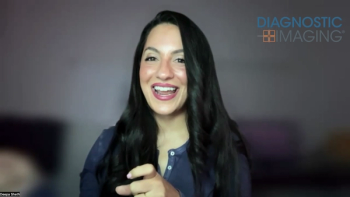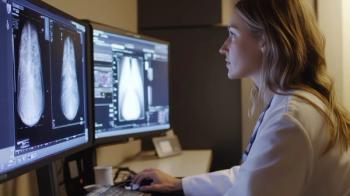
CT angiographers predict widespread reimbursement
It's not a question of if, but of when. Both academic and private-practice radiologists who perform cardiac CT angiography predict that reimbursement for the procedure will become widespread within a year.
It's not a question of if, but of when. Both academic and private-practice radiologists who perform cardiac CT angiography predict that reimbursement for the procedure will become widespread within a year.
"It's such a great exam for patients. It's got such great momentum that nothing can stop it," said Dr. David Dowe, COO of Atlantic Medical Imaging in Galloway, NJ.
Dowe can afford to be enthusiastic about the technology. His regional Medicare carrier began reimbursing cardiac CTA in June 2004, and Dowe said he has experienced no rejection from private insurance carriers, despite the fact that no specific CPT codes for cardiac CTA exist. He bills for the procedure in two ways: as a chest CT and a chest CT with contrast. The latter examination allows radiologists to investigate other possible causes of chest pain beyond the heart, such as a pulmonary embolism or aortic distention.
"There's a list of other things that could be causing chest pain," said Dr. David Levin, emeritus radiology chair at Thomas Jefferson University. "There's good justification for saying we're going to not only do a coronary CT angiogram, but look at the rest of the chest for other possible abnormalities that could cause those symptoms."
Some practitioners say those repurposed codes are not enough, however.
"It entails a lot more work than standard CTA of the chest for the thoracic aorta or pulmonary vasculature," said Dr. Brent Greenberg of Greenberg Radiology in Highland Park, IL. "There's a lot more work on the workstation and it needs to be ECG-gated."
Greenberg currently offers cardiac CTA on a self-pay basis. Until the procedure gets a CPT code of its own, he doesn't anticipate that insurers in his area will reimburse for it.
Ideally, cardiac CTA should have three CPT codes, said Dr. Edward Shapiro, a professor of medicine at Johns Hopkins University: one for assessment of coronary anatomy, including stenosis and extent of nonstenotic coronary disease; a second for 3D analysis of global and regional ventricular function; and a third code for a radiologist screen for noncardiac disease.
Until the literature wholeheartedly endorses cardiac CTA, radiologists cannot expect it to be widely reimbursed, said Dr. John A. Patti, chair of the American College of Radiology Commission on Economics. He cited a literature review by Dr. U. Joseph Schoepf et al in the July 2004 issue of Radiology that labeled the technology "promising enough to warrant pursuit of this application." The authors concluded, however, that "sensitivity is still not high enough for routine diagnostic needs."
That lack of unanimous endorsement from academic centers is the main hindrance to a wider adoption of CTA. The technology must be reproducible in a given patient, in a group of patients, and across multiple centers, said Dr. William T. Thorwarth Jr., immediate past president of the ACR.
"Just because something can be done in an academic research institution by the initial investigators does not mean it is immediately ready for coverage and widespread use," he said. "There has to be a reasonable consensus on the imaging protocols, equipment requirements, technologist and doctor expertise."
It remains to be seen whether cardiac CTA will be given a unique code or will continue to fit under an existing code. Regardless of whether a new code is adopted, insurers are not leaping to pay for new technologies, according to Patti.
"Getting adequate reimbursement for new technology is a huge issue for payers now. They realize it's very expensive and they want to be sure it's doing the patient some good, that it's not just another study that gets piled on top of all the other studies. They're being rigorous in examining the literature to make sure that before they do pay for something, it's going to be worthwhile," he said.
Supporters say cardiac CTA is well on its way to meeting those criteria. Its ability to eliminate cardiac catheterization for many patients will win insurers over, Levin said.
One of the main advantages of the technology is that it can quickly and easily eliminate coronary diseases as a source of chest pain.
"The most common indication for doing a coronary CTA is a patient with chest pain who has a positive stress test," Dowe said. "Ninety percent of the time, I give them a negative or near-negative coronary CTA. I don't think anyone should go to the cath lab without a coronary CTA if you have a center that does 16-slice coronary CTA and does it well."
Eighty-four percent of the patients he sees for cardiac CTA are either normal or have some plaque with no stenosis, Dowe said. Of the remaining patients, 13% need additional stress tests to correlate with the cardiac CTA, and 3% go directly to catheterization for treatment.
About 40% of cardiac catheterizations return a negative result, he said. Cardiac CT could eliminate these unnecessary catheterizations, and that is becoming a key factor drawing researchers to the procedure.
"Instead of subjecting patients with minimal symptoms, minimal chest pain, or atypical chest pain to an invasive procedure that's expensive, involves multiple individuals having to get together, and is very time-consuming, you'll be able to do this relatively quickly with minimal morbidity and essentially no mortality," said Dr. Charles White, director of thoracic imaging at the University of Maryland.
In addition, cardiac CTA provides a fuller picture of the coronary arteries than coronary angiography during catheterization can offer, according to Levin. Instead of showing just the lumen, cardiac CTA gives radiologists a picture of the walls of the vessel, allowing them to see plaques in the walls that don't encroach on the lumen.
Another advantage that cardiac CTA advocates tout is the technology's lower cost compared with other methods. Dowe said he is reimbursed about $1000 for a chest CTA and chest CTA with contrast. He cited an article in The New York Times that estimated the cost of a cardiac catheterization, including hospital and facility fees, to be as high as $18,000.
64-SLICE VERSUS 16-SLICE
Despite the promise of the technology, even its most passionate adherents admit that cardiac CTA is not quite ready to replace catheterization. With 16-slice equipment, the necessary breath-hold of 20 to 25 seconds and the contrast load can be too arduous for some patients. In addition, patients often must be beta blocked, the heartbeat has to be sufficiently slow, and the bolus injection must be precisely timed.
The main criterion is the sensitivity of the scanner, which is related to signal-to-noise ratio. Vendors are using a number of strategies, including increasing the milliamperage to boost signal and employing various algorithms to reduce noise.
Cardiac CTA cannot be reliably performed with less than a 16-slice scanner, and 16 is considered the barest minimum. Payers that do reimburse for cardiac CTA mandate these high-slice machines. Medicare of New Jersey, which reimburses for the procedure, requires at least a 16-slice machine and a submillimeter cut, Dowe said.
"They're not going to let just anybody with a box do it," he said.
The wider availability of higher slice machines is seen as the driving force behind the acceptance and eventual reimbursement of cardiac CTA. While 16-slice scanners are making cardiac CTA more accessible, researchers say the advent of 64-slice scanners will make the procedure practical on many levels within the near future.
The improvement will not be in image quality, Dowe said, but in the speed with which the procedure can be accomplished. With a 16-slice scanner, the scans take 15 to 18 seconds. With a 64-slice machine, they take about five seconds.
"A 64-slice scan will make coronary CTA possible in just about everyone, using only four to five beats. At that speed, you could scan a hamster," he said.
Even the most enthusiastic backer of the technology agrees that cardiac CTA is not a procedure to be taken lightly. White cautions that a patient who has a very high risk of significant coronary artery disease would probably be better served by a trip to the cath lab, where therapy can be administered immediately through the catheter. Experts warn that cardiac CTA should not be performed in patients with no risk factors and no symptoms.
"There is a justifiable fear that this technology could be overused," Shapiro said. "There's no evidence at the present time that it's effective or cost-effective in clarifying risk for asymptomatic patients. This is not something that's ready to be a screening test; there's too much radiation and contrast given to justify the approach."
WORKING TOGETHER
As the technology is rising to the challenge of cardiac CTA, experts warn that education of both radiologists and referring physicians may be the next stumbling block.
"I don't think it's sunk in what the power of the technology is," White said. "The internist, cardiologist, family medical physician, and surgeon should be thinking of this as the study to order under appropriate circumstances."
This is one instance where cardiologists and radiologists may accomplish more by working together.
"Both the ACR and the American College of Cardiology are very aware of the issue of reimbursement for cardiac CTA," Patti said. "I'm sure they're going to work together to reach a solution once the technology becomes more widespread and accepted and good studies prove the efficacy. I think it's going to be a collaborative effort to make sure this is properly coded and reimbursed."
Even vehement turf warriors such as Levin believe that cardiac CTA will be most effective if both specialties cooperate. Both Levin's program at Jefferson and White's at the University of Maryland emphasize collaboration between the specialties. Greenberg expects cardiac CTA to increase interventional cardiac catheterizations performed by cardiologists in patients who might otherwise have been missed while simultaneously eliminating diagnostic catheterizations for patients without disease.
"(Cardiologists and radiologists) need to play in the sandbox together," Greenberg said. "If cardiologists view this not as a threat but as something likely to produce more interventional catheter studies and procedures, they'll see it won't be taking money out of their pocket."
Cardiologists hoping to adopt cardiac CTA on their own may face serious reimbursement barriers, Dowe said. The American Heart Association recently issued a position paper stating that cardiologists who perform the procedure should have a radiologist's backup.
That position is an attempt to save the healthcare system, he said.
"We're finding that private payers are beginning to not credential nonradiologists for high-tech imaging like CT, MR, and PET because they know it's going to explode and be massively overutilized," Dowe said. "If used correctly, cardiac CTA could save the healthcare system a ton of money. If the cardiologists refer it in addition to a stress test and catheterization, it'll be the straw that broke the camel's back."
Even without reimbursement, doctors who perform cardiac CTA expect its star to rise.
"People won't pay for things that don't have value," Greenberg said. "No one is reimbursed for calcium scoring, but it still survives because calcium scoring has a definite value. Just like the calcium scoring, cardiac CTA has that value."
Newsletter
Stay at the forefront of radiology with the Diagnostic Imaging newsletter, delivering the latest news, clinical insights, and imaging advancements for today’s radiologists.






























